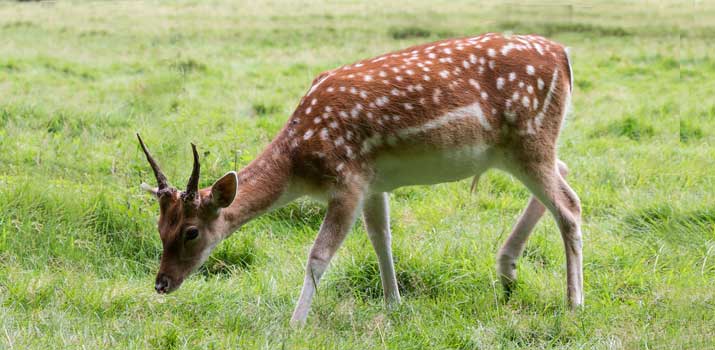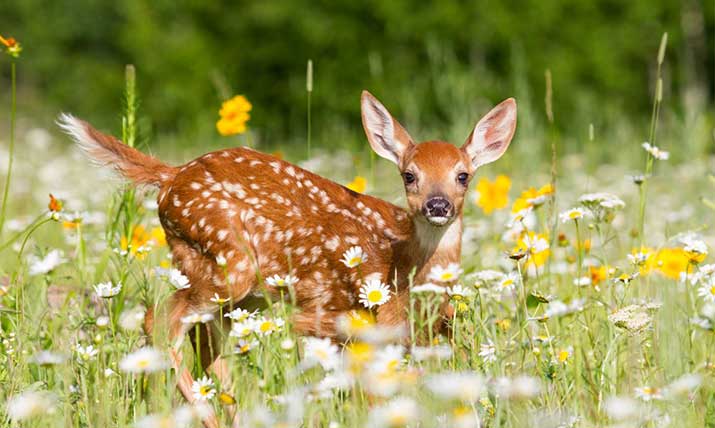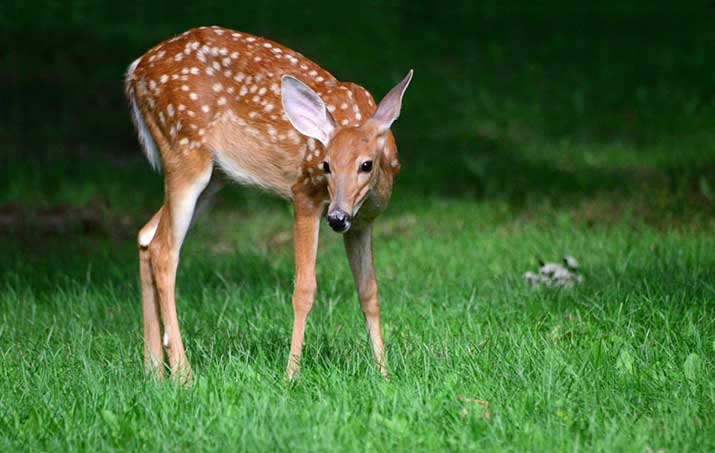
There’s just something about small and cute animals that seem to make our hearts ache. Maybe it’s that parenting instinct that is buried deep inside each of us.
Puppies, kittens, cubs, you name it, they all look so fragile, helpless, small, and adorable. However, none compete with fawns that still carry their little white spots.
But alas, those spots don’t last all that long as fawns do lose their spots.
So, you might be wondering why do fawns have those little white spots littered across their bodies?
Why do they lose them, and when do they lose them? Well, keep reading and I’ll cure all of your curiosity. Let’s find out!
Why Do Baby Deer Have Spots?
Before we get into when fawns lose their spots, we should probably talk about why they have them to begin with, right?
Well, as you can imagine, when a fawn is born they are pretty defenceless. They aren’t ready to deal with all that nature will throw at them. So their best form of protection is to seamlessly blend in with their surroundings.
This helps to hide them from any predators that may be lurking close within the vicinity. They’ll nestle into the shrubbery or bushes around them and lay down completely motionless.
If a predator does come calling, they also have the ability to drop their heart rate right down and slow their breathing to the point where it almost stops.
This allows them to go undetected and keeps them safe.
Spots Resemble Light and Shadows
Now, you may be thinking, but you can quite clearly still see the fawn.
And yes, you and I might be able to still detect the fawn, but you have to remember that most predators that are lurking don’t actually have the same eyesight as us.
They tend to see less color and instead more light.
The spots resemble the light and shadows of the forest and thus pretty much camouflages them from predators.
Related: What Do Deer See in the Dark (night-vision)
Keeping Hidden

Spots aren’t the only self-preservation method used to keep these defenceless fawns alive.
You often won’t find baby deer and their moms together all that often.
This isn’t because they are just instantly left to their own devices, but because the presence of the mother can actually attract more predators.
The fawn’s mother will usually lick her child until she is completely clean and odorless after birth. She’ll then only return to feed or relocate the fawn.
This helps to distract predators from her young’s location.
Never fear though, for a fawn’s mother is never far away.
She will always be close by to step in as a protector should anything bad happen.
So, you might want to think twice before approaching an unaccompanied fawn – they have very protective parents.
When Do Fawns Lose Their Spots?
Fawns are born with those self-preserving spots already littered across their backs. Their size and shape will vary somewhat as will their location.
This is because it is supposed to resemble what light looks like as it passes through the thick forestry.
But how long do they get to keep them? A fawn will remain spotted for just three to four months maximum.
So it really isn’t that long at all. They are only really present during the time that the fawn is at their most vulnerable.
As I mentioned above, during the first few months the fawn’s mother will keep her young hidden in the foliage around her.
I did mention that approaching a hidden fawn may not be the best idea due to their protective mothers, but there is also another reason.
Giving Away it’s Location
If you go close to a young fawn hidden in the trees, you are essentially giving their location away to all the predators hoping to hunt.
And a hidden fawn is usually no older than 12 weeks old, so it is everyone’s best interest to keep clear.
If you do have the privilege of spotting a spotted fawn, it also means that they are still being nursed by their mother.
It isn’t until after the three to four months when they have lost their spots that they will start foraging for food alongside their mother.
And this is probably why we don’t catch a glimpse of young spotted fawns all that much.
How Do Fawns Lose Their Spots?
So, now that you know why and when fawns lose their spots, you might be wondering how they lose them.
And it actually is a pretty simple process. It’s not as if the spots will just drop off or anything. It’s a little slower than that.
A fawn won’t wake up one morning with spots and then suddenly arise the next morning completely spotless.

The process happens through moulting.
Pretty much any mammal with hair moults or sheds their hair in some way or another. Even you and I moult.
That’s why you might notice your hairbrush or bath plug often gets clogged up with hair.
Well, deer moult too. And fawns have their first moult, you guessed it, after three to four months.
Those white spots of hair will moult away and new spotless hair replaces it.
It’s crazy, really, when you think about it. It really shows the complexity of animals on a biological level.
The knowledge that these spots will no longer be required once they have built up their defences is embedded within them.
And as soon as they are ready to be without them, they shed those spots. Pretty impressive.
How To Tell A Fawn’s Age?
Obviously, we can’t exactly go up to a fawn and ask them when their birthday was.
Though it would certainly make life a little easier for biologists and wild-life enthusiasts alike if we could.
But there are a few ways that you can gauge the age of a fawn. So let’s take a look.
- Spotted – If you see a fawn with spots you will know that they are four months old or younger. We know this because it is after this time that they begin to lose them.
- Playful & Social – Once the spots begin to fade away, and a fawn becomes around 6 months old they become pretty playful and social.
- Brave Wanderers – As they become a little older still, they begin to bravely wander further from their mothers and their snouts become more defined like that of an adult.
- Baby Bucks – Young bucks will also have extra spots where their antlers will begin to grow.
- Growing Antlers – If you see a fawn that has begun to grow antlers, you can assume that the buck is at least around 10 months old as this is when the process begins.
Final Thoughts
Deer really are strong and magnificent creatures, but it appears that we are all brought into the world the same way.
Weak, fragile, and defenceless. And we grow into our potential as we age.
Fawns, when first born, are pretty unsteady on their feet and are simply not prepared to deal with the threats that lurk around them.
This is why their mothers ensure that they are buried and hidden away deep within the foliage.
It is also why they are born with those cute and adorable white spots that help them blend in seamlessly and effortlessly with their surroundings.
But of course, as they continue to age and grow, they are no longer under quite the same threat and so these spots become unnecessary.
And at around the 3-4 month mark, when that little baby fawn can get to their feet and start venturing into the forest with their mom, they become somewhat redundant.
And this is why they shed their spots.
It is really important to remember that fawns, especially while still spotted, have a lot of self-preservation traits that keep them safe.
So you should never try to approach a young fawn if you see one as you could alert predators to their surroundings.
And let’s just say this much…you’ll instantly regret it if mom sees you anywhere close.
